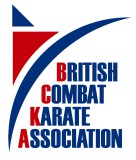
The AMRAP (and other hells)
Interval training is any training method that alternates a short burst of high intensity effort with a period of active rest. There are different types of interval training, for example, "Race Pace-Plus" which is designed to develop the coordination necessary to move faster and "Maximal Intervals" that are designed to build the muscle energy delivery system.
A "Race Pace-Plus" interval is performed at a pace slightly above your current best pace, but for a much shorter duration. For example, if you are trying to improve your time over 5 km and your best
pace is 6 minutes per km then you might train at 250 m intervals in 85 seconds (which is about 5% faster than your race pace). This conditions the body to move faster.
A "Maximal Intervals" session involves very short intervals performed at maximum capacity with relatively long rests between intervals. For example, a runner might train by running up a steep hill;
an athlete who uses the anerobic system might train with added resistance, for example, by wearing arm or leg weights.
There are three big benefits of interval training (of any kind). Actually there are more, but these are the three that matter most to me. Firstly it helps to break through plateaus, and that's
particularly important for the middle-aged like me. Improvement is slow. Really slow. The older one is, the harder it is to add strength, endurance and flexibility (holding onto what I've already got
is hard enough). This means that plateaus appear earlier, last longer and are harder to break through. Interval training, if done properly, pushes you through the plateau for a few seconds or minutes
and provides visual evidence of progress.
Secondly, interval training helps avoid boredom which is critical if training is to be maintained. It is short, sharp and can be designed to be competitive helping the maintenance of interest. If
like me you have a busy day at work, a busy evening at home and a weekend pack full of other commitments, then squeezing in a few intervals is much more practical than fitting in a long training
session.
Finally, it is highly effective at raising the second lactate threshold (LT2). This is the point where lactate begins to accumulate rapidly, breathing becomes laboured and you feel like you have to
quit. Raising this threshold makes future exercise more tolerable which, again, is critical if plateaus are going to be defeated.
There are at least three types of interval training deployed on a regular basis at Chelmsford Combat Karate. There is the "AMRAP" (it stands for As Many Rounds - or Repetitions - as Possible),
various versions of the tabata and then the home grown techniques like "pound the focus pads while someone tries to drag you backwards by your belt."
The AMRAP usually involves four sets of 10 exercises - choose from this list: sit ups, press ups, burpees, squats, tricep dips, or anything else - performed at different stations on the mat. The interval is created by the few seconds it takes to job from station to station. The competitive element is provided by attempting to complete the most sets, or more sets than you managed last time. Selection of the exercises is important as you need to ensure that you get a full body work out (for karate) or you work the right muscle groups that are specific to your sport.
The "pound the focus pads" drill is a fun one and very martial arts specific, so it is one of my favourites. It is performed in groups of three with one person holding the pads, one punching and the
third holding the puncher from behind via a second belt looped through the puncher's belt. The pad holder moves around calling out punch combinations; the puncher chases them down and the third
person provides sufficient resistance to force the puncher to work their legs and core in reaching the pads. This is really "double interval" training and hence highly effective. The arms, core and
upper body are worked while punching and rested while moving; the legs work while moving then rest while punching. It is also great fun, unless you are with someone twice your weight or the person
holding you back suddenly lets go!
